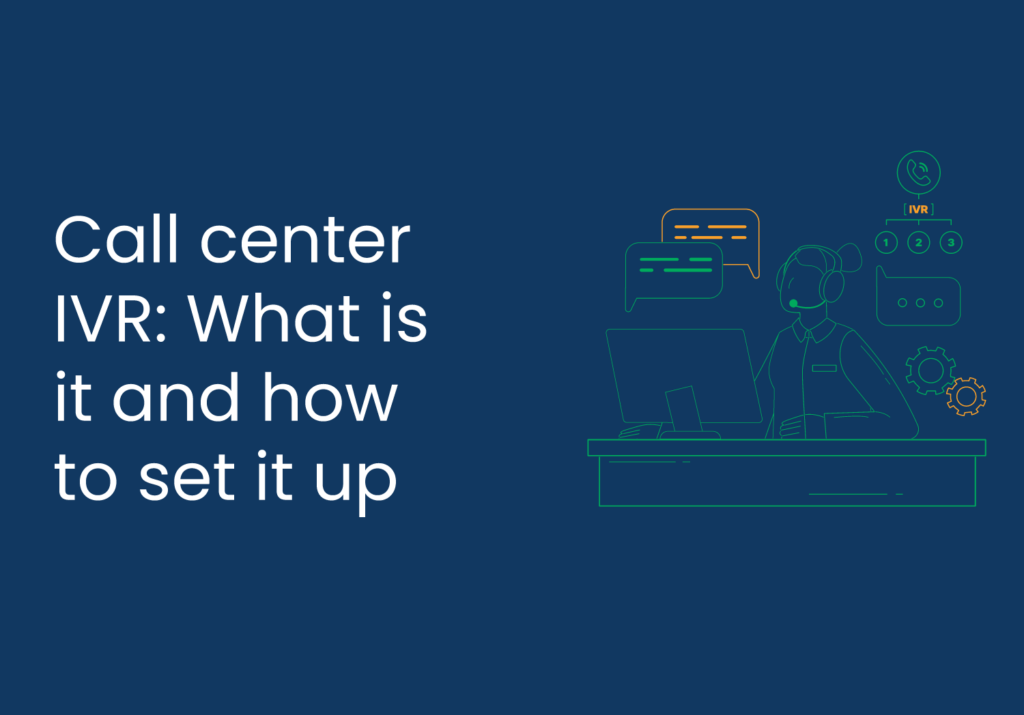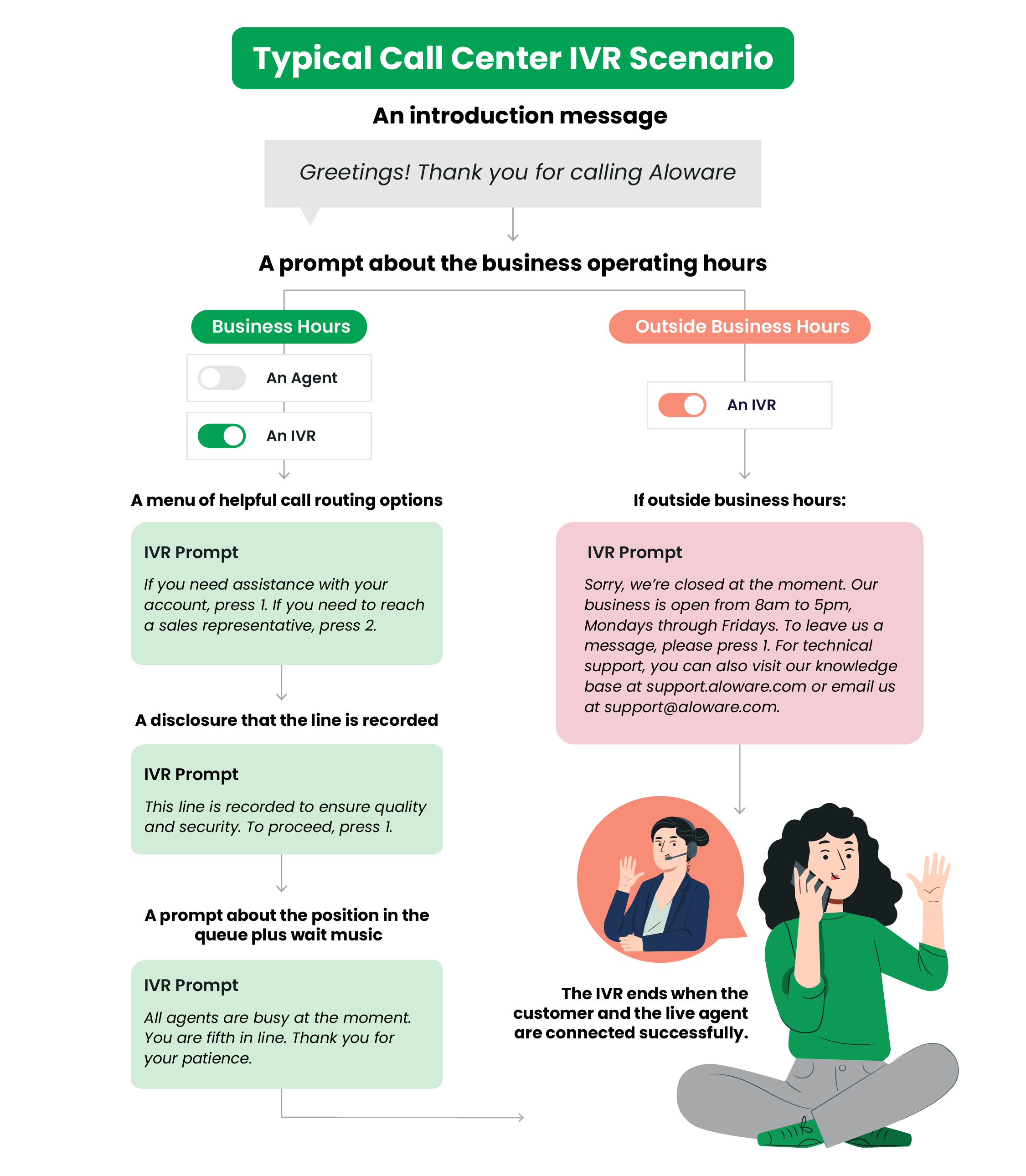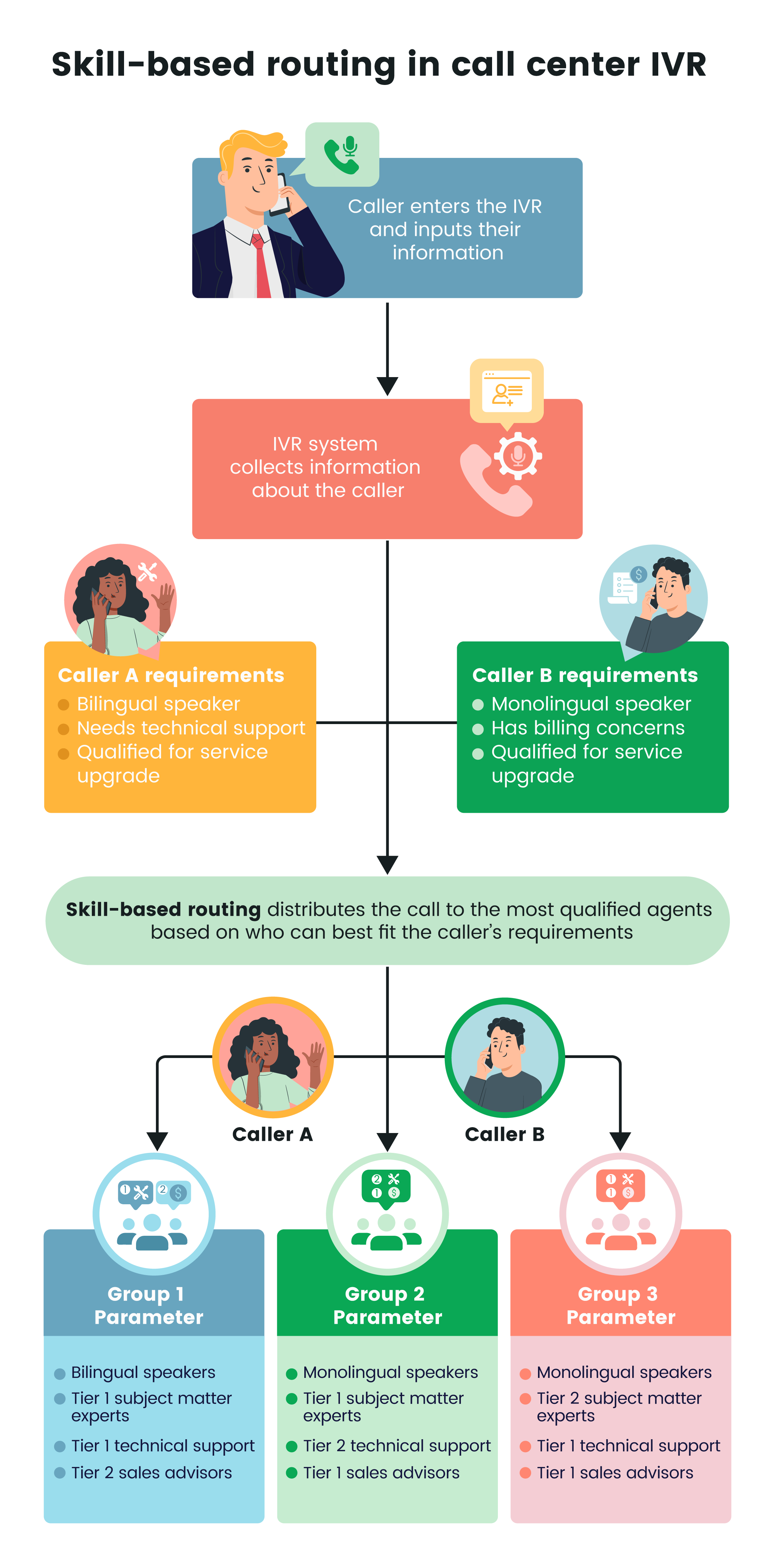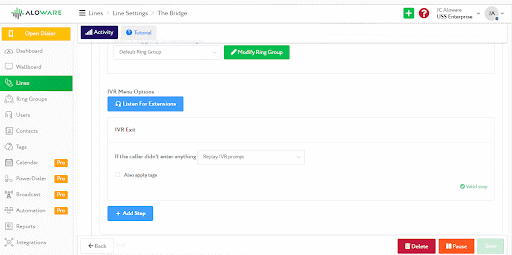A call center typically has different call management systems that help them with their operation. An inbound call center operation uses an IVR system to properly assist incoming callers to be routed to the correct department for a better customer experience. Managing inbound calls include repetitive steps that can be handled by a system that would efficiently sort and assess customer requirements before they reach a live representative.
An Interactive Voice Response (IVR) is a telephony technology that uses a series of pre-recorded messages and an automated menu that initially interacts with the caller. Commonly known as a phone tree, the IVR system is set up in a contact center to help businesses manage incoming calls. There is more to call center IVRs than just routing the call to the best agent for the job.
Here is a typical call center IVR scenario that might have happened to you when you contacted a company. First, an IVR always starts with a greeting. It is then followed by options within the automated menu and associated command keys. Finally, queue music is played for the customer during the wait times before being answered by a live agent.
Table of Contents
How do call center IVR tools function?
A call center IVR has many functions and is not only limited to proper call receiving and routing. Traditionally, it uses DTMF or “touch tones” that allow dialers to navigate without tying up an operator. Today, callers can interact with the phone system using speech recognition to command a prompt in the IVR. Altogether, an IVR system can:
1. Serve as a virtual receptionist
Every time a caller calls into your business, it’s like stepping into your physical store or establishment. You are greeted by a receptionist, in this case, a virtual one. It uses a pre-recorded human speech to greet your caller and guide them on what part of your business they want to deal with.
IVR systems are always present even during outside business hours. You can make sure that your customers are well informed of your operating hours. They can be assisted with concerns that can be solved through automation. You can show how professional your business can be with the use of the IVR system.
2. Gather information about the caller
Have you encountered an IVR that collects information from your recent outgoing calls? It asked you about your account number, name, birthdate, or pin code. Nowadays, an IVR can recognize these types of data for three reasons: verification, security, and context before reaching an agent.
This works best for businesses that require a password or code from the caller whenever they transact through the phone. These types of transactions usually happen in industries like financial services (banks, credit cards, loans, etc), insurance, healthcare, and many other similar industries. This is to protect sensitive customer information and prevent fraudulent transactions.
3. Automate customer support
Equipping the IVR with a self-service option and automation is how modern-day companies manage inbound call center operations. Some IVRs can perform simple tasks typically done by a live agent including payment processing, service/account activation, balance inquiry, tracking updates, basic troubleshooting, and answering frequently asked questions (FAQ). This support can be available to the caller even outside business hours which means you can provide uninterrupted customer support.
Performing these tasks by your IVR can allow your agents to be more productive and focused on solving other complex tasks. However, don’t eliminate the option to speak with a live agent completely. Some callers like the elderly, differently-abled persons and new customers may still need human assistance. Remember to always put user-friendly interfaces and menu options on your IVR system.
4. Prioritize high-valuable calls
Long-time customers and those with high customer lifetime value (CLV) can be prioritized in the queue once the IVR recognizes their account or phone number. They will be routed to the agents who are most qualified to take their concerns. Other times, they are routed to the agent who had previously solved their concern. It will help your business develop a meaningful relationship with the customer.
This relationship with your high-value customers will have a lot of benefits such as repurchases, referrals, net promotion, and customer satisfaction. If long-time customers feel they are valued and heard, they’re more likely to develop loyalty to the business. Complex concerns from new customers should be addressed with the same urgency as well. You can turn a good impression into a great one with this IVR function.
5. Route calls using skill-based routing
Skill-based routing is a step-forward version of ACD or Automatic Call Distribution whereas the IVR system will give an option for callers to connect with the most suitable representative. For instance, they can be sent to an agent who can speak their language, is a subject matter expert, or matches their location. This will greatly improve the customer experience for your callers.
In skill-based routing, the caller will select their preferred language in the IVR menu. The caller will then be forwarded to the support team with phones that belong to the requested language. An agent can have multiple specifications and can handle different requested skills. Below is the representation of skill-based routing in call center IVR:
6. Deal with high call volume
Your call center IVR is not just your virtual receptionist. It serves as your high call volume manager during peak hours so that your agent won’t be devastated by the number of calls they have to take in. The IVR system will act as a self-service system for simple concerns not needing a live agent.
Some IVR systems like Aloware’s contact center software will let your callers opt-in for a callback during long wait times. Instead of staying on the line, Aloware can save their position in the queue and have an agent call them back instead. This feature will save your business from missed opportunities and call abandonment.
Benefits of call center IVR
Many small to medium enterprises nowadays employ IVR systems in their contact center. This is due to the rising demand for superior customer service, lower costs for IVR technology, and the popularity of hybrid remote work. Take a look at the benefits of having an IVR system in your contact center:
1. Increase FCR or first call resolution
First call resolution (FCR) is a metric in a call center where customers’ concerns are solved without the need for transfer. Since callers are always directed to the best agent to handle their concerns, the likelihood of their concerns being resolved right away is high. IVRs lessen the unnecessary transfers, reduce repeat calls, and overall improve the first call resolution rate.
2. Raise efficiency in customer service
Modern IVR systems can solve simple tasks like account verification and answering FAQs. It utilizes the time and talent of the support team effectively by allocating urgent calls to a live agent. When the CRM and IVR are integrated, a customer’s account is immediately pulled from the records saving the agent’s time in doing it manually. Your contact center operations will be more efficient when the IVR system is used wisely.
3. Minimize operational costs
You can cut costs by no longer having to hire and train agents dedicated to performing rather mechanical tasks such as general inquiries, payment arrangements, and balance inquiries. You can also save costs from data and call bandwidths from queue hold times and average handling time.
4. Enhance the call routing and transfer rates
The majority of the consumers expect their concerns to be solved by a single representative. It means that when they finally reached a live representative, they expect less call transfers and more resolutions. Optimizing the call routing process with the IVR system can significantly reduce call abandonment rates. Your customer will feel more heard and appreciated resulting in improved customer retention.
Best practices of call center IVR
Before you equip your contact center with an IVR system, follow these best practices of call center IVR from Aloware.
1. Do not complicate your IVR menu.
The ideal prompt in an IVR menu is five to six prompts. Anything more than that is complicated for most of your callers. Also, never make it difficult for them to reach a live agent. Give at least one to two self-service options before forwarding them to the live agent queue.
2. Prompt callers once about the call recording.
Calls are recorded for quality control and purposes. This is regulated by laws and callers should always be informed about their conversations being recorded. However, prompting the caller about the call being recorded multiple times will make them feel uncomfortable.
3. Give multiple language options.
If your business operates on a global scale, then you have to provide multilingual options for your customers. This is possible since some contact center software like Aloware provides a cloud-based contact solution so that you can hire different language speakers remotely around the world.
4. Set up a human-like IVR system.
You have to make your IVR system sound and behave like a human by recording your own prompts or utilizing a third-party AI voice generator that mimics natural human speech. Some IVR systems have a screen-dialing feature that allows people with impaired hearing to interact with the IVR for self-service transactions. These methods constitute contact center automation in humanizing the customer experience.
How to set IVR with Aloware contact center software
Aloware is a contact center software that is suited for managing call center operations, both inbound and outbound. It equips your contact center with omnichannel features like unlimited voice calls, two-way SMS/MMS, CRM integration, and local presence line provisions. Aloware’s IVR tree or IVR system will help your callers navigate their way to the right department. Configuring your IVR system in Aloware is easy for any business.
To start an IVR tree in your Aloware account, go to Line Settings and click the IVR tab. Each option in the IVR can be designated with a customizable voice prompt that dictates directions such us “Press 1 for Sales” or “Press 2 for Support.”
You can define the options for your callers. These options range from pressing 1 to 10 along with *(star) and # (hash/pound). You can see the list of the available options below.
Aloware helps companies manage their inbound and outbound contact center operations. You can keep tabs on your live calls, monitor metrics in your live dashboard, and manage lines and ring groups. Experience omnichannel communication with your customers and make more powerful calls with our power dialer. To learn more about Aloware, you can schedule a demo today with a live and friendly representative.







